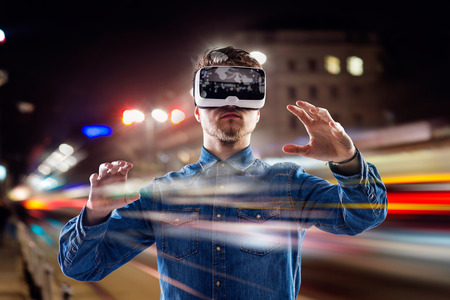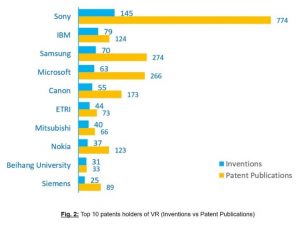The Legal Landscape for Virtual and Augmented Reality
The Legal Landscape for Virtual and Augmented Reality

In January 2016, Goldman Sachs issued a detailed report that estimated that the total addressable market for virtual reality and augmented reality combined will reach as high as $182 billion by 2025. This incredible figure is their “accelerate uptake” estimate, which assumes that head-mounted displays (HDM) will “evolve from a niche market device to a generic computing platform by 2025.”
The $182 billion estimate is broken down into $110 billion for VR/AR hardware and $72 billion for software. While the market is primarily relegated to gaming and entertainment at the moment, it has incredibly wide potential, with applications in defense, transportation, healthcare, education, engineering and design, among others. AR/VR will eventually have applications in new fields such as the Internet of Things, which will inevitably spur more growth.
According to an extensive article from IP Watchdog, “The patent landscape of VR is dominated by Sony followed by IBM, Samsung and Microsoft.” That said, smaller technology companies are clearly the vital heartbeat of the industry, and watching their movements will be key to understanding the circumstances surrounding patents in this field moving forward.

The Complicated Reality of Copyright Laws
While market growth and opportunities are exciting, developers and tech companies face a wide array of challenges. Copyright concerns are multi-layered and when intellectual property is threatened, many developers and patent owners do not yet have the incentive or the means to pursue infringing parties.
For this reason, it’s important to understand the history, terminology, policies and legal precedence surrounding VR and AR software and hardware. Virtual objects, virtual works, and virtual worlds are all composed of both an audiovisual component and a source code. Protecting all aspects of this complex technology requires a vibrant understanding of copyright law, specifically computer programming copyright law.
The law always protects original expression, which can be defined by whether the developer created the work independently, and by the extent of the creativity in the code. The originality, tested by abstraction, and the “look and feel” protection of all virtual aspects must be taken into full consideration when developing new VR technology.
Liability issues are yet another layer of complexity. Developers must be conscientious from the outset when choosing whether or not to use existing brands to create a real-world feel, and how or when to incorporate copyrighted music, photographs or avatars.
The VR and AR Marketplace
As major corporations have recognized the inevitable growth and complex potential in this field, smaller companies developing this technology have received boosts in funding and acquisition opportunities.
CB Insights reported that in 2015, “AR/VR startups raised a total of $658M in equity financing… across 126 deals.” The Facebook acquisition of Occulus Rift in 2014 helped jumpstart this flurry of activity. Recode.net reports that in the two years “since deal was announced, the number of venture capital deals and total dollars invested in VR and augmented reality have both tripled.” Just this month, the New York Times purchased Fake Love, a marketing agency specializing in VR and AR and Intel launched its new VR headset.
This means that opportunities abound for technology enthusiasts and business leaders. Strategic development and consistent protection of intellectual property is crucial for the success of any start-up business.
In a field as ripe and profitable as virtual reality, proper investment in smart legal counsel is critical for young companies and new technologies to thrive. Technology law is our area of expertise – contact Douglas Park Law at (678) 331-7274 for a free consultation.

